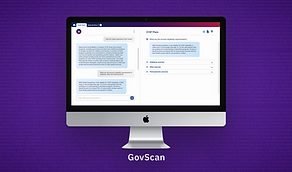Beyond Swipe
Designed a 'match score' feature to help users find compatible dates and improve paid user retention.
Individual Project: Interaction Design
Duration: 5 weeks (Research - Concept)
Mentor: Prof. Skip Shelly
Prof. Arie Stavchansky

Context
Bumble is the second most in demand dating application with a market share of 26%. It has about 50 million active users, vast majority of which do not pay for the service. As of 2023, there were only 2.4 million subscribers in premium, and premium+ tiers who enjoy features such as receiving more “likes", and the ability to see who liked them. Bumble believes in improving the paid user rate to drive revenue growth.
Solution
Business Problem
95% of the Bumble's active users don't pay for its premium features
A "match score" feature for the existing app, which helps users understand their compatibility with others. This improves their chances of finding dates.
The current paid features doesn't improve their chances of finding dates.
User's Problem
Research
But how did we reach here?
The design research was focused on understanding user behavior patterns on Bumble and then using the insights to develop new features for the application.
Discover & Define
Methods Used:
Data analysis, Customer reviews, Interviews.
Ideate & Build
Methods Used:
Wireframing, User flows, Hi-fidelity interfaces
Understanding user behavior
Bumble's app usage data for over 6 months, helped in understanding the usage pattern of the Bumble users. Interestingly, it revealed some co-relations between "user adoption rate" and "conversion rate" for existing features and negates marketing team's hypothesis.
(The marketing team's hypothesis was if location proximity is improved then paid user rate will increase)


Key finding
The above data explorations involved understanding CTRs, retention rate, paid user rate, adoption rate, screen views and user feedback rate. Co-relating these metrics led to following interesting insight.
While paid user rate decreased, app retention rate kept rising over the term of 6 months. This rise in user retention rate suggests that people are interested in the app, but not in paid features.

Why are user's not interested in paid features?
While data helped us understand user behavior patterns, interviews and customer reviews helped in understanding why users are behaving in certain way. 6 unstructured interviews with Bumble users and online reviews shared the following sentiment.

Aha! moment
Bumble user's core job is to find compatible dates. But the current premium features only help users understand who is interested in them. It doesn't help users understand their compatibility with others.
eg. If Sarah liked John's pictures. With premium John can only know Sarah liked his pictures. It doesn't tell John how compatible they both would be.

Ideation
Building the solution
The solution phase was divided into 3 phases. The intent of the ideation was to help users understand their compatibility with others beyond attractive looks on the platform
Iteration 1

The initial wireframes explored the various ways in which the app can communicate how compatible they are with the profile in front of them. Some of the explored ideas were 'Match Score', 'My Type', 'Choices'. Based on the user feedback 'Match Score' was selected but it needed some improvisations.
User feedback (iteration 1)
The concepts 'My Type' and 'Choices' required a lot of user efforts. The general behavior pattern on the app was to take decision within few seconds. Thus, the above two ideas required drastic behavior change. 'Match Score' on the other hand was simple but some user groups mistook the number for age. Some people were confused about what the compatibility score actually means.
Iteration 2

The low fidelity mockups explored the ways in which the concept of 'Match Score' can be incorporated in the existing mobile application.
User feedback (iteration 2)
The user feedback suggested that its important to label the number to avoid its misinterpretation. Additionally, the breakdown of compatibility score was well received, but users wanted a description or an overview about what the number means.
Iteration 3
Translating mobile interfaces to desktop and watch screens was challenging as each screen size has limitations on what can be displayed. This iteration helped in prioritizing information for each device.

Component and Micro-interaction

Trigger
User swipes through profiles to find potential partners
Rule
If the user’s profile match exceeds 75% it is a super match.
Feedback
The component pops and changes it state to yellow indicating super match.
Loop
The animation repeats next time when the match exceeds 75 next time.

Solution
The final product
'Match Score' is a feature, that enables user to check their compatibility with the profile in split seconds. It helps users asses profiles beyond initial impression.




